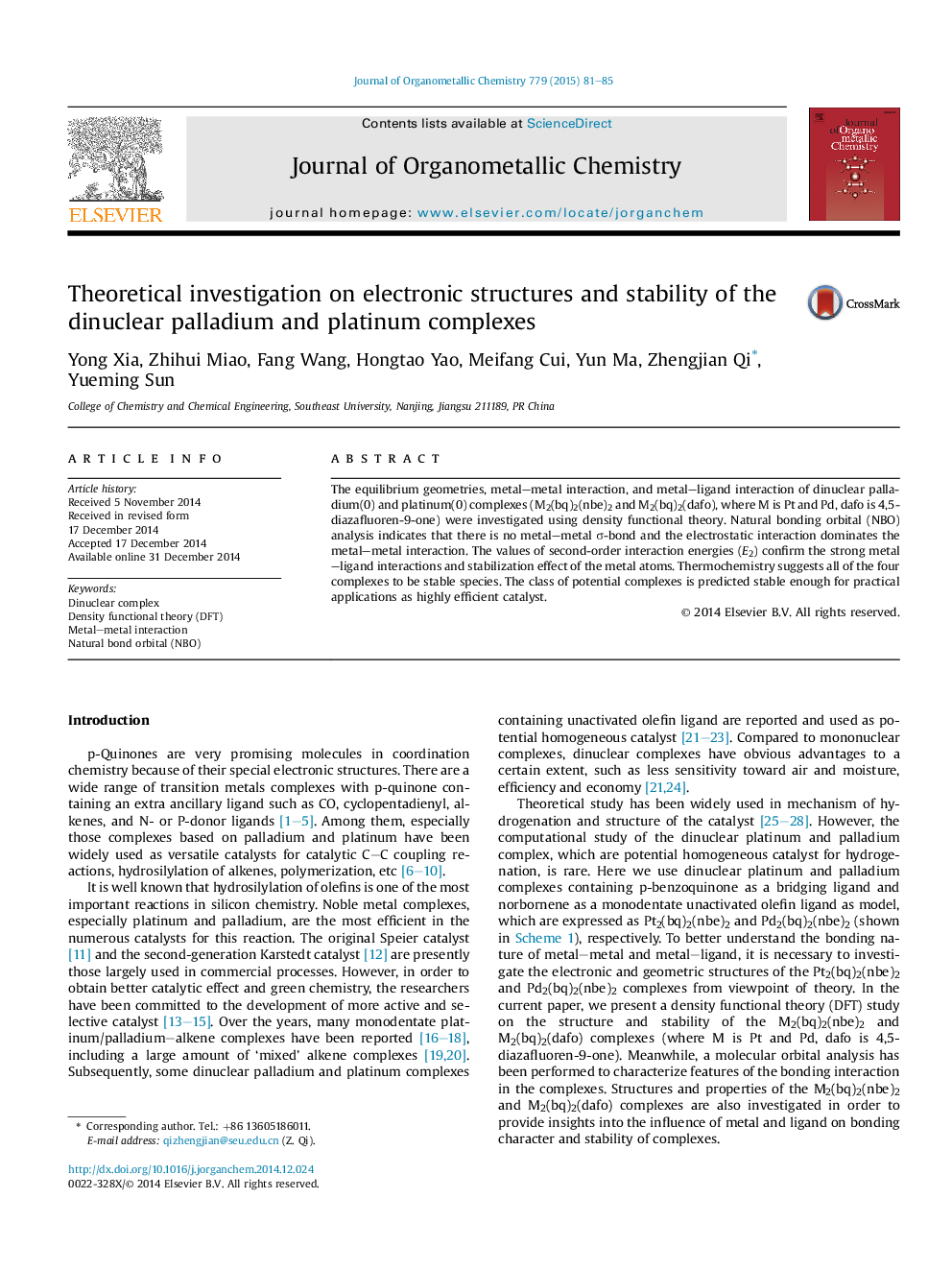| Article ID | Journal | Published Year | Pages | File Type |
|---|---|---|---|---|
| 1322152 | Journal of Organometallic Chemistry | 2015 | 5 Pages |
•The DFT computational study of the dinuclear palladium(0) and platinum(0) complexes.•There is no metal–metal σ-bond in the dinuclear complexes.•The electrostatic interaction dominates the metal–metal interaction.•The four dinuclear complexes are stable species.
The equilibrium geometries, metal–metal interaction, and metal–ligand interaction of dinuclear palladium(0) and platinum(0) complexes (M2(bq)2(nbe)2 and M2(bq)2(dafo), where M is Pt and Pd, dafo is 4,5-diazafluoren-9-one) were investigated using density functional theory. Natural bonding orbital (NBO) analysis indicates that there is no metal–metal σ-bond and the electrostatic interaction dominates the metal–metal interaction. The values of second-order interaction energies (E2) confirm the strong metal–ligand interactions and stabilization effect of the metal atoms. Thermochemistry suggests all of the four complexes to be stable species. The class of potential complexes is predicted stable enough for practical applications as highly efficient catalyst.
Graphical abstractThe DFT computational study of the electronic structures and stability of the dinuclear palladium(0) and platinum(0) complexes, M2(bq)2(nbe)2 and M2(bq)2(dafo), were reported using B3LYP method at 6-31+G(d) level.Figure optionsDownload full-size imageDownload as PowerPoint slide
